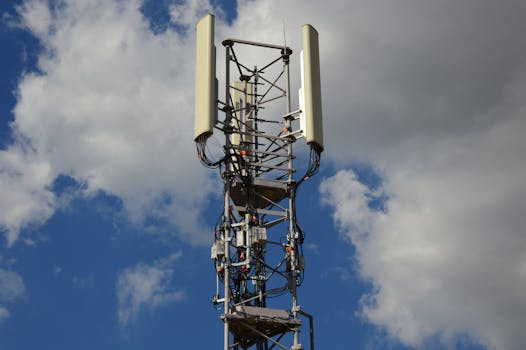5G Technology Advancements and Impact on Mobile Networks

5G Technology Advancements and Impact on Mobile Networks
5G technology advancements have been making waves in the telecommunications industry, transforming the way we communicate, work, and live. The fifth generation of wireless technology promises to deliver faster data rates, lower latency, and greater connectivity, enabling a wide range of innovative applications and services. In this article, we will explore the latest 5G technology advancements and their impact on mobile networks.
5G technology is designed to support a vast array of use cases, from enhanced mobile broadband and mission-critical communications to massive machine-type communications. The technology utilizes a new radio access technology, known as New Radio (NR), which provides a flexible and scalable framework for supporting diverse applications and services. With 5G, mobile network operators can offer a range of services, including high-speed mobile broadband, ultra-high-definition video streaming, online gaming, and virtual and augmented reality experiences.
The Impact of 5G on Mobile Networks
The impact of 5G on mobile networks is multifaceted. One of the most significant effects is the increase in data rates, which can reach up to 20 Gbps in ideal conditions. This enables users to enjoy seamless and high-quality video streaming, online gaming, and other bandwidth-intensive applications. Additionally, 5G reduces latency to as low as 1 ms, allowing for real-time communication and enabling applications such as remote healthcare, smart cities, and autonomous vehicles.
Another significant impact of 5G on mobile networks is the increase in network capacity. With 5G, mobile network operators can support a vast number of devices and connections, making it an ideal technology for applications such as smart cities, industrial automation, and massive machine-type communications. Furthermore, 5G enables the use of network slicing, which allows multiple independent networks to run on top of a shared physical infrastructure, providing a high degree of flexibility and customization.
5G Technology Advancements
Several 5G technology advancements have been made in recent years, including the development of millimeter wave (mmWave) spectrum, which offers a vast amount of bandwidth and enables high-speed data transfer. Additionally, the use of beamforming and massive MIMO (Multiple Input Multiple Output) technologies has improved the efficiency and capacity of 5G networks. Furthermore, the development of edge computing and network functions virtualization (NFV) has enabled the creation of more agile and flexible networks.
Another significant advancement in 5G technology is the development of standalone (SA) architecture, which enables the deployment of 5G networks without the need for legacy 4G infrastructure. This has reduced the cost and complexity of 5G deployments, making it more viable for mobile network operators to roll out 5G services. Moreover, the use of artificial intelligence (AI) and machine learning (ML) has improved the management and optimization of 5G networks, enabling real-time monitoring and optimization of network performance.
Conclusion
In conclusion, 5G technology advancements have revolutionized the mobile network landscape, offering unparalleled speeds, lower latency, and greater connectivity. The impact of 5G on mobile networks has been significant, enabling a wide range of innovative applications and services. As 5G technology continues to evolve, we can expect to see even more exciting developments, from the use of terahertz frequencies to the integration of 5G with other technologies such as Wi-Fi and the Internet of Things (IoT). With its vast potential and capabilities, 5G is set to transform the way we live, work, and communicate, and its impact will be felt for generations to come.




